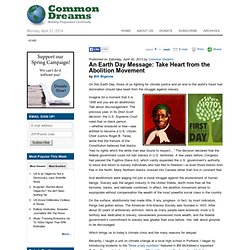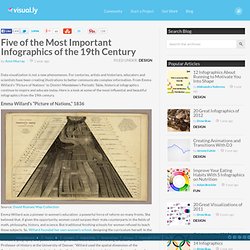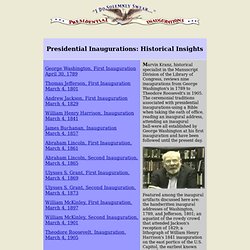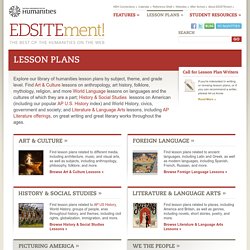

15 Minute History: Quick History Lessons from a New, Chart-Topping Podcast. World War II: After the War - In Focus. At the end of World War II, huge swaths of Europe and Asia had been reduced to ruins.

Borders were redrawn and homecomings, expulsions, and burials were under way. But the massive efforts to rebuild had just begun. When the war began in the late 1930s, the world's population was approximately 2 billion. In less than a decade, the war between the Axis the Allied powers had resulted in 80 million deaths -- killing off about 4 percent of the whole world. The Mark E. Mitchell Collection. If famous historical events took place in the age of Instagram [20 pictures]
The folks at Histagrams imagine if famous historical figures were all avid social media users who reported the events that we all remember them for in real time on Instagram… Lots more at Histagrams.
![If famous historical events took place in the age of Instagram [20 pictures]](http://cdn.pearltrees.com/s/pic/th/historical-instagram-pictures-82890959)
Related… Real Estate Prices. The History of Programming Languages Infographic. Posted by Neil DuPaul in INFOGRAPHICS, April 15, 2013 | In a world of increasing inter-connectivity, programming languages form the foundation.

Did you know that the first programming language is over 100 years old and was written by a woman, Ada Lovelace? Join as us we delve into the history, evolution, and prevalance of programming languages over the years. An Earth Day Message: Take Heart from the Abolition Movement. On this Earth Day, those of us fighting for climate justice and an end to the world’s fossil fuel domination should take heart from the struggle against slavery.

Imagine for a moment that it is 1858 and you are an abolitionist. Talk about discouragement: The previous year, in its Dred Scott decision, the U.S. Supreme Court ruled that no black person—whether enslaved or free—was entitled to become a U.S. citizen. Five of the Most Important Infographics of the 19th Century. Data visualization is not a new phenomenon.

For centuries, artists and historians, educators and scientists have been creating illustrations to better communicate complex information. From Emma Willard’s “Picture of Nations” to Dimitri Mendeleev’s Periodic Table, historical infographics continue to inspire and educate today. Here is a look at some of the most influential and beautiful infographics from the 19th century. Emma Willard’s “Picture of Nations,” 1836 Source: David Rumsey Map Collection Emma Willard was a pioneer in women’s education: a powerful force of reform on many fronts. Walter Houghton’s “Conspectus of the History of Political Parties and the Federal Government,” 1880 Source: Lincoln Financial Foundation Collection Inspired by the United States Centennial in 1876, Walter Houghton created this stunning visualization that maps the history of political party action over the preceding century.
Best of History Web Sites. Teacher, with help of grandparents, collects dirt from famous places - Kearney Hub: Local News. KEARNEY— One Central Elementary School teacher has little pieces of history hanging on his classroom wall.

Troy Saulsbury, a fourth-grade teacher at Central and the Kearney High School tennis coach, has a collection of more than 50 clear capsules that contain dirt from every state. Most of that dirt came from historically significant locations. An online service is needed to view this article in its entirety. You need an online service to view this article in its entirety.
American History Timeline. Presidential Inaugurations: Words and Images. George Washington, First Inauguration April 30, 1789 Thomas Jefferson, First Inauguration March 4, 1801.

American culture. America on the Move: Where's Everyone Going? American Institute for History Education. The Best Free Documentary Websites. I usually blog about web tools and mobile apps that we can use in education but since it is summer holidays now i am going to provide you with a list of free documentary websites that you can use to watch thousands of documentaries from different categories.

Feel free to share the post with your friends and colleagues. Here is the list of some of the best free Documentary websites.1- Fandor Fandor is a website that offers over 2000 indie movies that you can watch right from your computer. It also includes international movies and documentaries covering various categories such as comedy, drama, action and science fiction. All you need to do is log on with your facebook account. Cracked.com - America's Only Humor Site. EDSITE Lesson Plan. Art & Culture » Find lesson plans related to different media, including architecture, music, and visual arts, as well as subjects, including anthropology, philosophy, folklore, and more.

Foreign Language » Columbia American History Online. Essential Questions in Teaching American History. Stanford read like a historian Curriculum. The Reading Like a Historian curriculum engages students in historical inquiry.

Each lesson revolves around a central historical question and features sets of primary documents modified for groups of students with diverse reading skills and abilities. This curriculum teaches students how to investigate historical questions employing reading strategies such as sourcing, contextualizing, corroborating, and close reading. Instead of memorizing historical facts, students evaluate the trustworthiness of multiple perspectives on issues from King Philip's War to the Montgomery Bus Boycott, and make historical claims backed by documentary evidence.
Historical Thinking Matters: home page. History by Era. American Trails. Playing History.
Slavery and abolition. Black Culture. American revolution. Primary sources. Colonial history. Immigration.